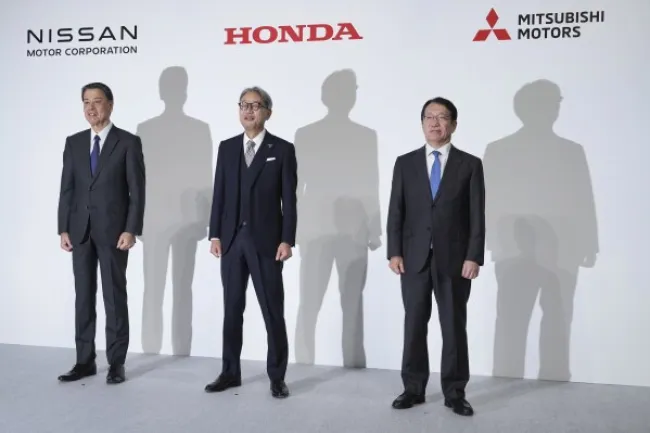Nissan and Honda Teeter on the Edge of a Bold Merger: Will It Save Them or Sink Them?
In a move that could either redefine the global automotive landscape or become one of the biggest corporate missteps in history, Nissan and Honda have announced they are in talks to merge.
The proposed union, which also includes Mitsubishi Motors, aims to create the world’s third-largest automaker, trailing only Toyota and Volkswagen. But is this a visionary leap forward or a desperate bid to survive?
The announcement came during a tense joint press conference in Tokyo on December 23, 2024. Nissan CEO Makoto Uchida and Honda CEO Toshihiro Mibe framed the merger as a bold step toward the future. Yet, behind the polished statements lies a harsh truth: both companies are fighting to remain relevant in an industry rapidly leaving them behind.
The Clock Is Ticking: Why the Rush to Merge?
The automotive industry is evolving at breakneck speed, and Nissan and Honda are struggling to keep up. While Tesla dominates the electric vehicle (EV) market and Chinese newcomers like BYD and Nio gain ground, these Japanese giants are feeling the heat.
"We cannot afford to be complacent," Uchida declared at the press conference. But is this merger truly about innovation, or is it a last-ditch effort to stave off irrelevance?
Mibe was more candid, admitting that the companies’ current collaborative framework is insufficient to compete in the EV race. "We need more than just partnerships—we need a complete transformation," he stated.
The Plan: A Giant Leap or a Risky Gamble?
Under the proposed merger, Nissan and Honda would form a joint holding company, with Honda taking the lead in managing the new entity. Combined annual sales are projected to exceed 30 trillion yen ($191 billion), with operating profits expected to reach 3 trillion yen. Mitsubishi Motors, already part of Nissan’s alliance, is also eyeing the deal, which could push the group’s global sales to over 8 million vehicles annually.
However, integrating two massive and culturally distinct Japanese automakers is no small feat. The failed Daimler-Chrysler merger of the late 1990s serves as a cautionary tale of how such endeavors can unravel.
"This isn’t just about numbers—it’s about merging two very different corporate cultures," noted Akio Takahashi, an auto industry analyst. "If they can’t get that right, this merger could implode."
The Real Threat: Chinese Competitors
While Nissan and Honda negotiate their future, Chinese automakers are quietly gaining ground. Companies like BYD and Nio are capturing market share with affordable, cutting-edge EVs, leaving legacy automakers like Nissan and Honda struggling to catch up.
"The Chinese are coming, and they’re not playing around," said Sam Abuelsamid, an auto industry analyst. "Nissan and Honda are realizing they can’t go it alone anymore."
The merger aims to pool resources and expertise, combining Nissan’s EV battery technology with Honda’s hybrid powertrains. But will this synergy be enough to fend off the Chinese juggernauts?
Renault’s Role: A Wild Card in the Mix
Nissan’s largest shareholder, Renault, is closely monitoring the merger talks. While Renault has expressed openness to the deal, its involvement could complicate matters. The French automaker has its own EV ambitions, and any concessions to Honda could create friction.
"Renault isn’t going to sit back and let Honda take the reins," said Adam Jonas, an auto analyst at Morgan Stanley. "This could get messy."
What’s at Stake?
If successful, the merger could position Nissan and Honda as a global powerhouse with the scale and resources to compete with Tesla and Toyota. But if it fails, both companies risk fading into irrelevance.
The stakes couldn’t be higher. This isn’t just about creating the world’s third-largest automaker—it’s about survival.
The Big Question: Will It Work?
The Nissan-Honda merger is either a masterstroke of strategy or a desperate gamble. Either way, it’s a high-stakes bet that could save two iconic Japanese brands—or seal their fate as industry also-rans.
As the clock ticks toward the June 2025 deadline to finalize the deal, one thing is clear: the automotive world is watching, and the pressure is on.
Stay tuned for more updates as this high-stakes drama unfolds.
